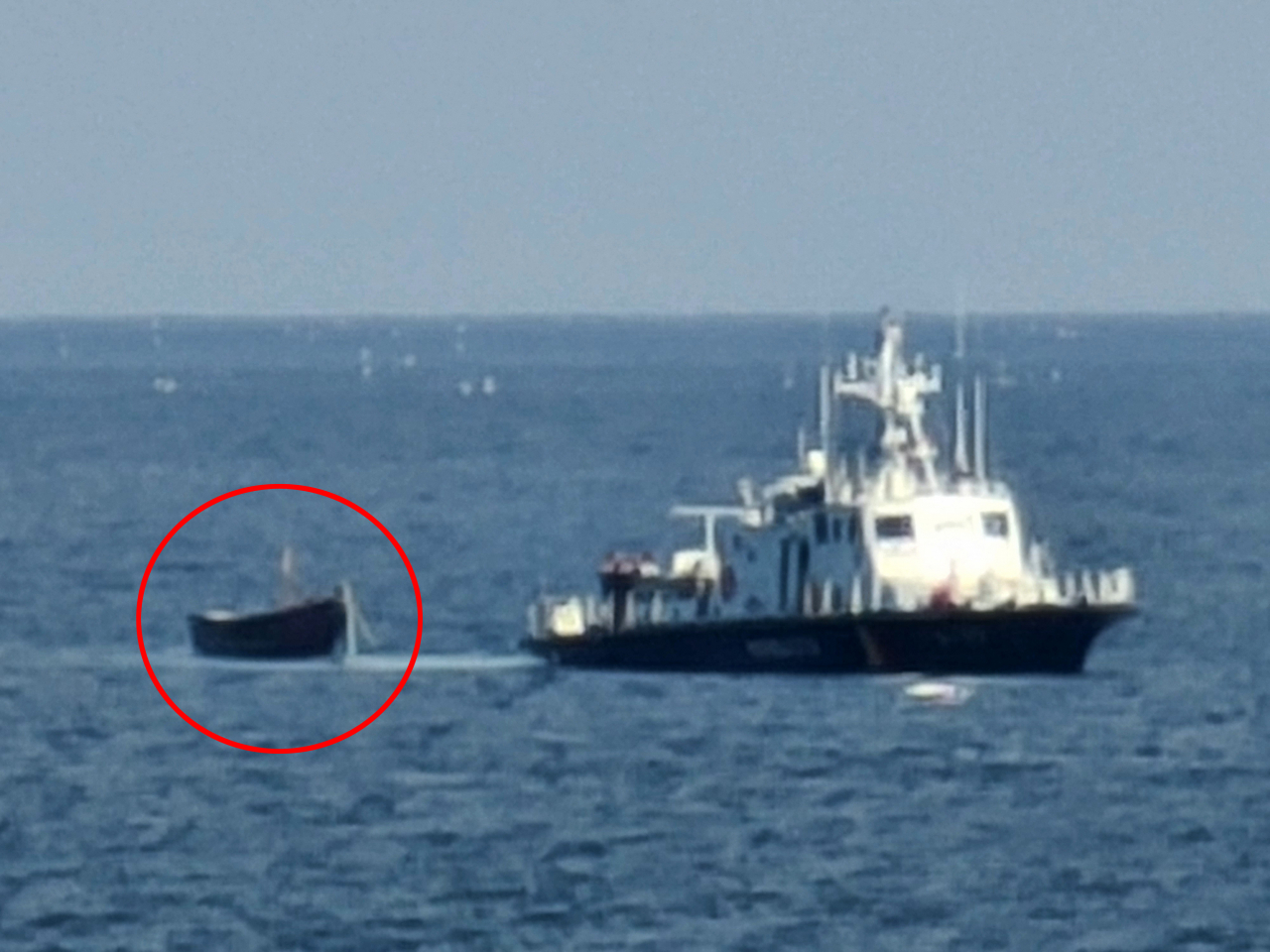4 North Koreans cross East Sea maritime border in first since 2019
S. Korean military faces criticism for failing to detect border crossing of NK vessel
By Ji Da-gyumPublished : Oct. 24, 2023 - 14:52

A group of unidentified North Koreans crossed the inter-Korean maritime border in a boat in the East Sea on Tuesday morning, marking the first case since 2019.
The four North Koreans traveled across the inter-Korean border in a small wooden vessel and initially expressed their intent to defect to South Korea when they were discovered by South Korea's Coast Guard, government sources told The Korea Herald.
The initial assessment by the South Korean government suggests that the four individuals -- one man and three women -- are a family, The Korea Herald learned from a conversation with a government source.
The vessel was around 7.5 meters in length and weighed less than 5 tons, a typical configuration used by the North Korean military for various operations, including fishing. At the time of the discovery, the four people on board were unarmed and not wearing military uniforms.
The border crossing, however, has led to accusations of a failure of military surveillance in the maritime border area.
The South Korean military initially detected unusual activity on the northern side of the Northern Limit Line, the de facto maritime border in the East Sea, which included a search operation by the North Korean military, before 4 a.m. on Tuesday, senior officials from the Joint Chiefs of Staff said Tuesday on condition of anonymity.
Before 5 a.m., the South Korean Navy's P-3 maritime surveillance aircraft and at least one vessel were dispatched near the NLL, but the military did not initially identify the North Korean vessel moving toward South Korea.
Subsequently, the South Korean Army's ground-based radar system for maritime surveillance first detected the North Korean vessel at around 5:30 a.m. and continued tracking it. The Navy's Thermal Observation Devices (TODs) later identified the vessel at approximately 6:30 a.m.
Before receiving the report from a South Korean fishing vessel, the South Korean military was unable to confirm that the unusual object it had tracked for over an hour was the same vessel.
The South Korean military was also unable to confirm the exact time the North Korean boat crossed the Northern Limit Line.
A South Korean fishing vessel, operating about 11 kilometers off the eastern coast of the city of Sokcho, Gangwon Province, initially spotted the North Korean boat at approximately 7:10 a.m. and reported it to the Coast Guard.
A Coast Guard patrol boat swiftly arrived at the scene, where they verified the presence of four North Koreans on board at around 8 a.m. The Coast Guard then handed the individuals over to the South Korean government's joint investigation team.
The South Korean military secured the four North Koreans in coordination with the Coast Guard on Tuesday morning, according to the JCS.
JCS officials, however, denied claims that the military's surveillance operation near the inter-Korean maritime border had failed.
Surveillance had detected the vessel moving diagonally toward Sokcho from the northeast. The JCS officials pointed out that the vessel's route was similar to other South Korean vessels operating in the area.
"There are hundreds of fishing vessels out there. So, with constant comings and goings, there are established routes near the ports. However, beyond those areas, they maneuver freely for their fishing operations. So, it's challenging to consider the movement (of the North Korean vessel) as an extraordinary situation; rather, it is more of a common practice," one unnamed official said during a closed-door briefing.
"These situations occur with notable frequency, and when the Coast Guard and Navy must respond every time, it becomes an unmanageable circumstance from my point of view."
However, the vessel is assumed to have originated in North Korea, intentionally traveled toward the far eastern region, crossed the inter-Korean border, and then proceeded to a South Korean port from the far northeastern area -- potentially to evade South Korean monitoring.
The four North Koreans are currently subject to a joint government investigation aimed at understanding the motives behind their defection and assessing whether their desire to escape North Korea is genuine.
This is the first East Sea border crossing by North Koreans to evade surveillance since June 2019, according to the military.
During that incident, a North Korean fishing vessel, carrying four individuals, successfully docked at the port in Samcheok, Gangwon Province, catching the South Korean military off guard, and was only discovered after a civilian reported the border crossing to the police.



















![[Today’s K-pop] Treasure to publish magazine for debut anniversary](http://res.heraldm.com/phpwas/restmb_idxmake.php?idx=642&simg=/content/image/2024/07/26/20240726050551_0.jpg&u=)